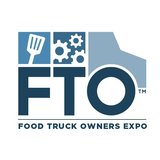Commentary
Are you ready to expand into a brick and mortar restaurant?
Many food truck owners aspire to open a brick-and-mortar restaurant, but to this successfully, they need to be realistic about whether adding a restaurant makes sense at its current state of the food truck's business.

March 25, 2019
 |
Agnes Teh Stubbs serves as a content analyst at Software Advice, a Gartner company, covering trends in the retail and restaurant space. |
By Agnes Teh Stubbs
How does a food truck owner know when it is the right time to expand into a brick-and-mortar restaurant? Opening a restaurant is the goal of many food truck owners, but it's important to be realistic about whether adding a restaurant to your food truck is the best strategy at its current state of business.
Before taking this step, food truck owners need to ensure that they: a) are cash flow positive, b) have built a reliable and stable team, and c) have established strong customer demand and brand identity. These three steps are necessary before making that decision to expand to a brick-and-mortar restaurant. We will explore them one at a time.
Why cash flow matters
Cash inflow refers to money that is coming in to your restaurant. It is the lifeline of your business and comes from sources like payments from customers and receipts from loans and investments.
To stay on top of your finances, the amount of cash coming into your business must be greater than what's going out. A business that has a positive cash flow will be able to pay its bills on time and make new investments like hiring more employees and buying more equipment, in turn, growing the business.
A business that is consistently operating with positive cash flow will survive the hard times as it'll still be able to pay employees' salaries and make payments to vendors. Failing which, the business could risk bankruptcy.
How can you improve your cash flow position? Monitor your daily and weekly cash flow.
Managing daily and weekly expenses with a POS is essential to ensuring a foodservice business runs smoothly. Take into account what's coming in (from customers, investors etc.) and what's going out (rent, salaries, vendor payments, etc.). Compare the amount with other weeks through your POS. Understanding trends in your cash flow will enable you to make spending adjustments accordingly.
Another way to improve cash flow is to raise your prices, providing it will not drive away customers. Suddenly increasing the price of every item at once may catch your customers off-guard. Instead, pick one or two items (preferably your more popular items) to update every quarter, with a slight variation to the dish, to bring them to market value. Underperforming dishes can also be removed, which will free up cash by removing excess inventory and cut costs where needed.
It's also worth noting that it's better to use your own cash flow and stay away from borrowing other people's money. If you are paying off debt constantly, it can be tough to have positive cash flow.
Being cash flow positive is not the same as being profitable. While cash flow refers to when your food truck needs money, profit is what's left after all your expenses are paid.
You may make a profit for the month while still experiencing intermittent periods of cash flow shortfalls.
Profitable businesses can go bankrupt. Without having sufficient cash on hand to pay your employees, vendors and suppliers, you risk having to close your business.
The importance of a reliable team
With a great staff, you can rest assured that your daily operations in every area are running smoothly.
The stronger your team is, the stronger your food truck will be, providing a solid foundation for your restaurant expansion. A reliable team will make your transition to a restaurant that much easier.
Customer demand and brand identity
Having a strong customer demand and brand identity are important.
Is the current customer demand more than what your food truck can handle? Are customers increasingly calling for you to open a second shop? In terms of brand identity, is your food truck standing out? Do customers know what you stand for?
Observe the market and research your competitors. If your food is meeting a demand in the market, you may want to move fast to strengthen your competitive position.
Research your restaurant market
It is in the best interest of any business owner to learn as much about their competitors as possible. Doing so will let you know what their strengths and weaknesses are and how you can get a leg up. There are a few ways you can research your competitors.
1. Talk to customers. Speak to customers who've dined at your competitors and ask them what they liked/didn't like.
2. Check out existing restaurants. Even better, you can check them out first hand. Scoping out your competitors requires a first-hand perspective. That means visiting those restaurants, sampling their food and checking out their service and ambiance.
3. Read online reviews. Find out what people are saying about your competitors — what did they love or hate?
4. Look up their websites. Find out what your competitors are doing to attract customers (and keep them) on their websites. Do they have a loyalty program online? Do they have online ordering? Is their online branding consistent with their brick-and-mortar?
In each of these cases, pick out what your competitors are lacking, what customers want more of and implement what you can do better.
Part 2 in this two-part series will explore determining capital and human needs, sources of funding, restaurant site selection and other considerations in starting a brick-and-mortar restaurant.


